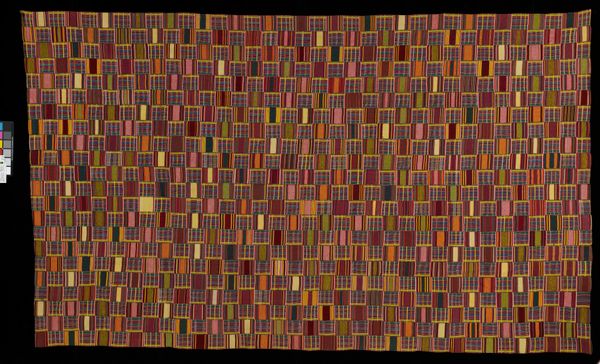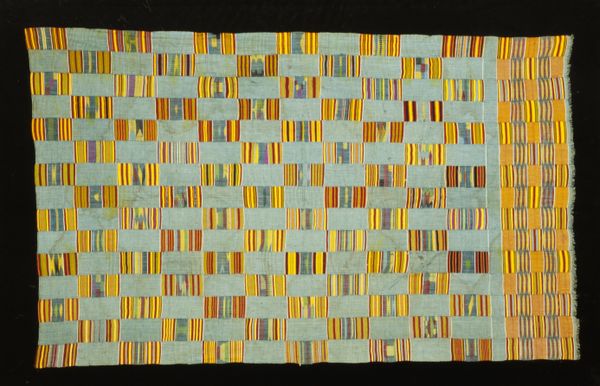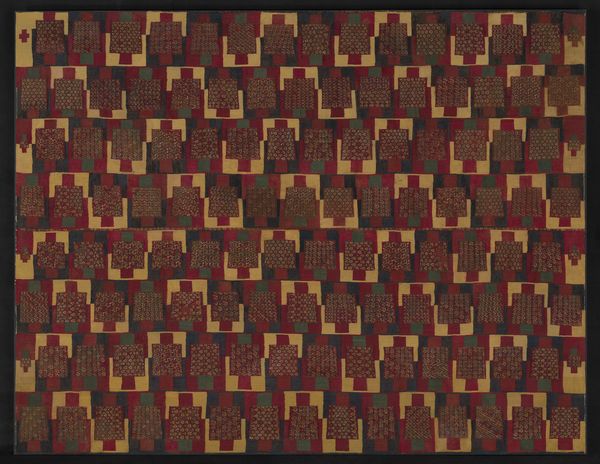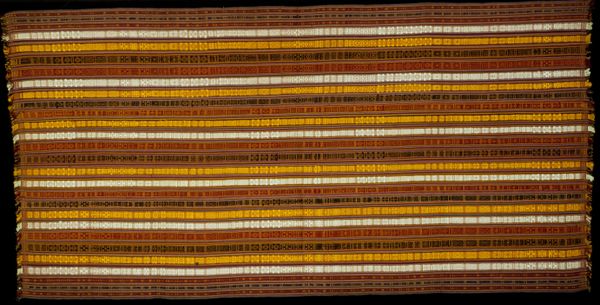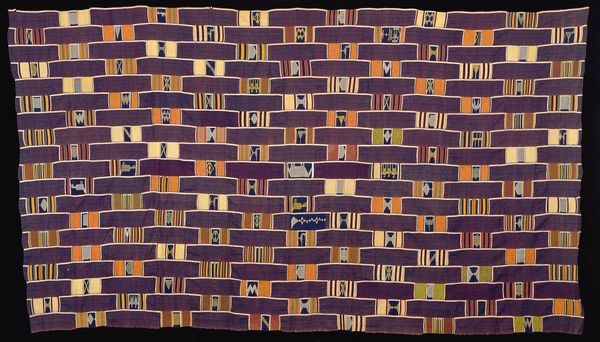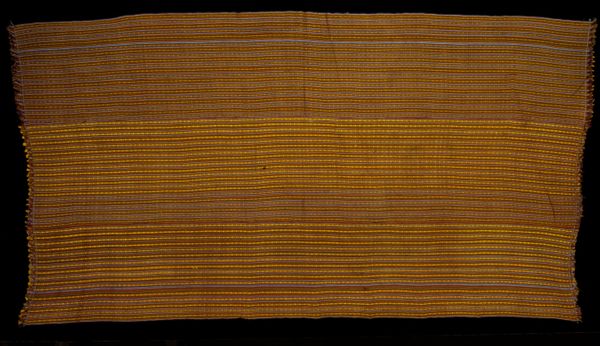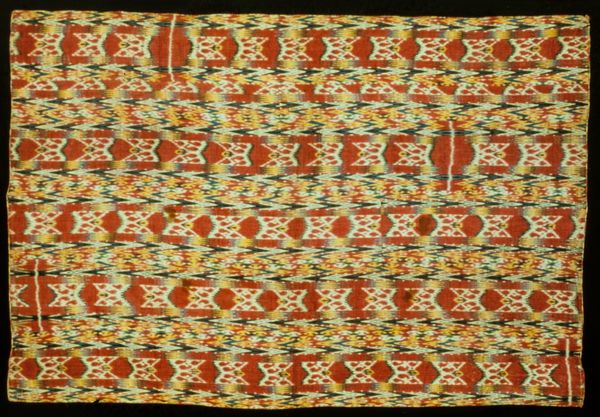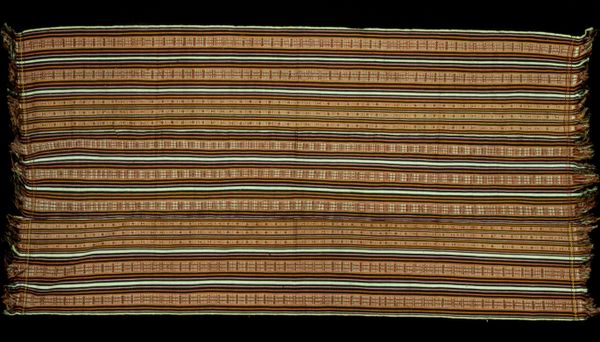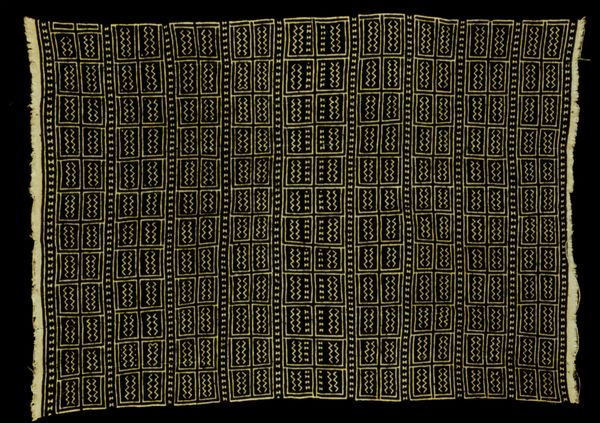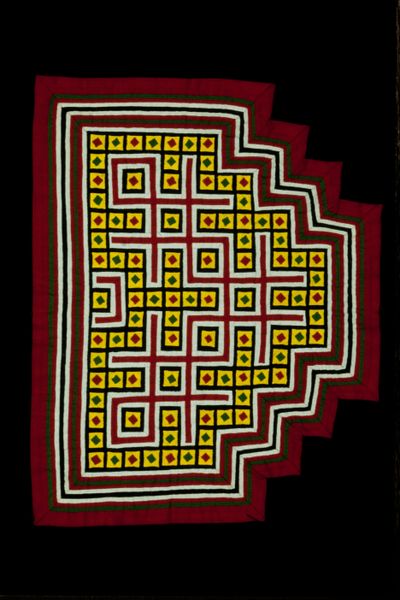
weaving, textile
#
pattern heavy
#
african-art
#
weaving
#
textile
#
geometric pattern
#
abstract pattern
#
geometric
#
repetition of pattern
#
vertical pattern
#
pattern repetition
#
layered pattern
#
funky pattern
#
combined pattern
#
repetitive pattern
Dimensions: 100 x 66 1/2 in. (254 x 168.91 cm)
Copyright: Public Domain
Curator: The geometric designs immediately strike the eye—it's incredibly vibrant. Editor: Indeed! We are looking at an Ewe textile entitled "Wrap," dating back to the 20th century. The cotton weaving is currently held at the Minneapolis Institute of Art. Curator: As a textile, the 'Wrap' occupies a critical position as more than a practical object, it's also a statement piece, functioning to define both individuality and belonging. How would you evaluate the significance of this relationship between social performance and this cotton cloth? Editor: From a material perspective, the processes involved, from cotton cultivation to the weaving and dying of the cloth, represent a fusion of artistic and labour practices deeply embedded in community economies. Curator: Right, the intricate weaving reflects sophisticated artistic traditions and encodes specific cultural meanings. The pattern acts as a complex social script to consider its wearers' position, origin, and beliefs. We could think of the process of crafting such a garment, particularly by women, as a process of actively re-articulating societal norms. Editor: Precisely! Also, considering the means of production allows us to understand value beyond pure aesthetics. Labor transforms raw material into an object imbued with significance. The combination of different materials available, the choices in dyeing—they all contribute to a textile's potential consumption value. Curator: Consumption itself plays a crucial role—not only materially, but as a form of performative action. These fabrics historically facilitated a narrative between identity and agency and highlight broader debates concerning colonization, globalization, and power dynamics. Editor: Yes, understanding the cloth’s manufacture reveals social structures, reinforcing the value created at each stage. Its geometric nature and abstraction suggest to me an interaction of artistic integrity coupled with a clear intention of commodity purpose. Curator: Thinking about these combined values enriches our interpretations—prompting us to acknowledge labor while engaging with its social implications and artistic language. Editor: It’s this dialogue between art and everyday utility that makes analyzing such an item very compelling. Curator: Absolutely. And considering textiles in the art historical context really brings up key conversations about power and cultural production. Editor: I agree—studying "Wrap" has provided me with another opportunity to connect art with daily lives while emphasizing tangible connections, which always leads to something new!
Comments
No comments
Be the first to comment and join the conversation on the ultimate creative platform.
